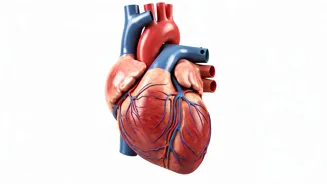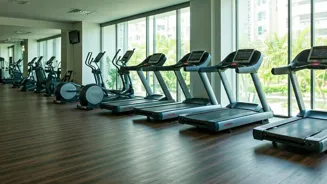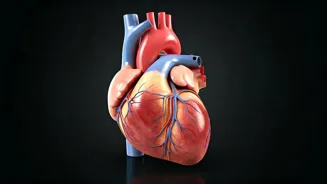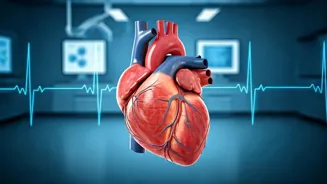Cardio's Heart-Healthy Benefits
Engaging in cardiovascular exercises is an excellent method for lowering blood pressure. These activities get your heart pumping faster, and in turn, strengthens
it, making it more efficient. When your heart becomes stronger, it can pump more blood with less effort, thereby reducing the force on your arteries. Activities like brisk walking or jogging fall into this category. You can also consider swimming, cycling, or dancing to reap the benefits of cardio. To maximize the advantages of cardiovascular exercise, aim for at least 150 minutes of moderate-intensity or 75 minutes of vigorous-intensity exercise per week. Remember to consult with a healthcare professional before starting any new exercise routine, particularly if you have underlying health conditions. This is particularly important to avoid any potential health risks.
Strength Training Explained
Strength training, sometimes referred to as resistance training, is another effective approach to lower blood pressure. This involves working your muscles against a force, like weights or resistance bands. When you engage in strength training, you increase your muscle mass, which in turn improves your metabolism. This can help with weight management, another important factor in controlling blood pressure. Exercises like lifting weights, using resistance bands, or bodyweight exercises such as push-ups and squats fall into this category. It's recommended to incorporate strength training at least two times a week, targeting all major muscle groups. Starting slowly and gradually increasing the intensity can avoid injury. Combining strength training with cardio exercises delivers comprehensive cardiovascular benefits.
Yoga and Flexibility
Yoga and other flexibility exercises, such as stretching, can be surprisingly helpful for lowering blood pressure. Yoga combines physical postures, breathing techniques, and meditation to reduce stress and improve overall cardiovascular health. Regular practice can improve blood vessel function, which helps regulate blood pressure. Flexibility exercises also improve blood flow and reduce stiffness in the arteries, which indirectly supports lower blood pressure readings. Consider including yoga or stretching sessions several times a week, either on your own or by attending a class. There are various styles of yoga, so choose one that you find enjoyable. Remember to breathe deeply and move slowly. Combining yoga with other exercises creates a holistic approach to blood pressure management.
High-Intensity Interval Training
High-Intensity Interval Training, or HIIT, is a time-efficient workout style that can deliver impressive benefits for reducing blood pressure. HIIT involves short bursts of intense exercise followed by brief recovery periods. This type of training is extremely effective in improving cardiovascular fitness and lowering blood pressure. A typical HIIT session might include 30 seconds of intense activity, like sprinting, followed by 30 seconds of rest or low-intensity exercise. Repeat this cycle for 20–30 minutes. HIIT helps boost your metabolism and burn a considerable amount of calories in a short time, aiding in weight management. It’s a great option for people with busy schedules. However, it’s important to be in relatively good shape before starting HIIT. Always consult your doctor before attempting it, especially if you have any underlying health issues.
Dancing for Health
Dancing is a fun and engaging way to incorporate exercise into your lifestyle while also benefiting your blood pressure. Dancing is a form of aerobic exercise, so it offers similar cardiovascular advantages as jogging or cycling. It gets your heart rate up and improves blood circulation, which helps to reduce blood pressure. Depending on the style, dancing can involve a variety of movements that work multiple muscle groups, leading to improved strength and flexibility. Dance classes can be a great way to get social interaction and learn new skills, keeping you motivated. You can choose from different types of dance, like Bollywood, Zumba, or even ballroom. Regular dance sessions for about 30 minutes, a few times a week, can be a good start to improving your blood pressure.
Swimming for Wellness
Swimming is a low-impact exercise that is easy on the joints, making it a suitable activity for almost anyone. It’s an excellent form of aerobic exercise that benefits your cardiovascular system, thereby reducing blood pressure. The buoyancy of the water supports your body weight, reducing the stress on your joints and muscles. Swimming improves blood circulation and strengthens your heart. Swimming is also a great way to relax and reduce stress, which, in turn, can help lower blood pressure. Consider swimming a few times a week, aiming for at least 30 minutes per session. You can vary your strokes and pace to keep it interesting. If you are not a strong swimmer, start with shorter sessions and build up gradually. Always ensure your safety and swim in a supervised environment.
Lifestyle Adaptations
While exercise is incredibly important for lowering blood pressure, other lifestyle choices play an equally important role. Maintaining a balanced diet rich in fruits, vegetables, and whole grains, while limiting sodium intake is crucial. Sodium can elevate blood pressure. Limiting alcohol consumption and avoiding smoking are also essential steps. Stress management is another key area; techniques like meditation, deep breathing exercises, and spending time in nature are very helpful. Monitoring your blood pressure regularly and consulting with your doctor about your overall health plan is vital. Combining regular exercise with these lifestyle modifications will help you control and lower your blood pressure effectively. Remember to be consistent and patient, as the benefits may take some time to fully manifest. Consult your doctor before making any drastic changes.




